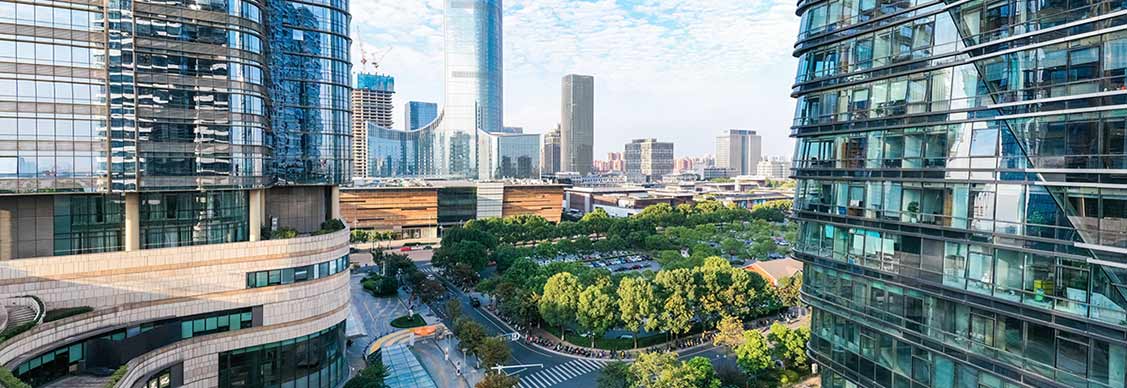How emerging cities are taking on global innovation hubs
The world’s tech epicenters are facing fresh competition for talent and investment
Bangalore, India’s third largest city, last year beat out Shanghai in venture capital funding for the first time.
The city has long been regarded as India’s Silicon Valley and the hub for many of the country’s big tech firms. But the surge in investment — a 162% year-on-year growth in new capital, according to Crunchbase — signaled a broader shift among investors, who are diverting attention from more typical innovation and talent hotspots.
“Innovation-oriented industries and availability of talent will be key growth drivers for the next cycle of urban and real estate recovery,” says Carol Hodgson, Global Research Director at JLL. “There is a strong link between innovation, talent ecosystems and real estate performance.”
Bangalore was one of nine cities dubbed “emerging innovators” in JLL’s Innovation Geographies report. While major U.S. and European cities, along with rising Asia Pacific powerhouses, dominate the list of top cities for innovation, cities like Chengdu, Delhi, Guangzhou, and Hyderabad are catching the eye of global companies looking to expand, and real estate investors diversifying beyond established innovation hubs.
Push for innovation
Supportive policymaking is helping bolster these cities’ potential to attract people, companies, and capital.
For instance, Hyderabad has come to the fore as a preferred location for pharmaceutical companies, attracted by the city’s integrated pharmaceutical ecosystem from research to manufacturing, to set up their research and development (R&D) units.
The city’s success as a pharmaceutical and life sciences hub can be largely attributed to government-led infrastructure development, such as the Genome Valley R&D cluster and the Hyderabad Pharma City for R&D and manufacturing, which has convinced global pharmaceutical firms including Aurobindo, Laurus, Sai Life and Syngene to expand their business operations in the city.
The Indian government is also in the midst of drafting a policy to accelerate R&D and innovation efforts with the aim of transforming India into a leader in drug discovery and medical devices.
Another city making waves in the sector is Suzhou, China, which ranked 10th globally for venture capital funding in the life sciences sector from 2018 to 2020, according to Crunchbase.
Similar biomedicine clusters that are home to major biopharmaceutical and biotech companies have been built to support the city government’s vision of becoming the Pharmacy Valley of China by 2030. To achieve this vision, the city also offers incentives of up to 60 million yuan (US$9.43 million) for companies to set up their regional headquarters.
Creating these innovation clusters has already yielded results for the Chinese city. One of its biomedicine clusters, BioBAY, houses two of the companies that recently developed China’s first mRNA-based and first DNA-based COVID-19 vaccines.
Looking for more insights? Never miss an update.
The latest news, insights and opportunities from global commercial real estate markets straight to your inbox.
Space to create
Besides strong government policy, the “emerging innovators” also have the advantage of availability and affordability of office space.
According to JLL, the nine cities have the largest office development pipeline this year and next, exceeding development plans in other, more established innovation hubs. Office rents are also significantly lower in cities such as Bangalore and Hyderabad, as compared to Tokyo, London, or Hong Kong.
“The emerging innovators have plenty of potential to take on established cities with their favorable conditions for business leaders concerned with affordability, but they are still at a nascent stage in terms of building up a substantial talent pool, which is crucial for attracting companies and investors,” says Hodgson.
Low talent concentration a stumbling block
Despite having supportive infrastructure and operating conditions, the “emerging innovators” still need to resolve a relatively low talent concentration that could impede growth and, in turn, deter both companies and capital investors, the JLL report says.
They are not only competing with established innovation hubs for talent, but also smaller cities with conducive environments for innovation.
“Before the pandemic, talent-rich secondary cities were already attracting people and companies with their affordability and high quality of life,” says Hodgson.
The pandemic further accelerated the trend in certain countries. Large companies in the U.S. such as Tesla have moved their headquarters to lower-cost, more business-friendly cities.
Likewise, in India, cities like Bangalore and Hyderabad experienced a reverse exodus of talent across different sectors to smaller Tier-II cities including Ahmedabad and Coimbatore during the pandemic, according to management and strategy consulting firm Zinnov.
While attracting talent may help emerging cities close the gap with established innovation hubs, striking a balance between talent concentration and innovation will be most critical, according to Hodgson.
“As cities emerge from a difficult couple of years, those with a critical mass of people, broad mix of industries and major universities are best positioned to continue to attract talent and companies,” she says.
